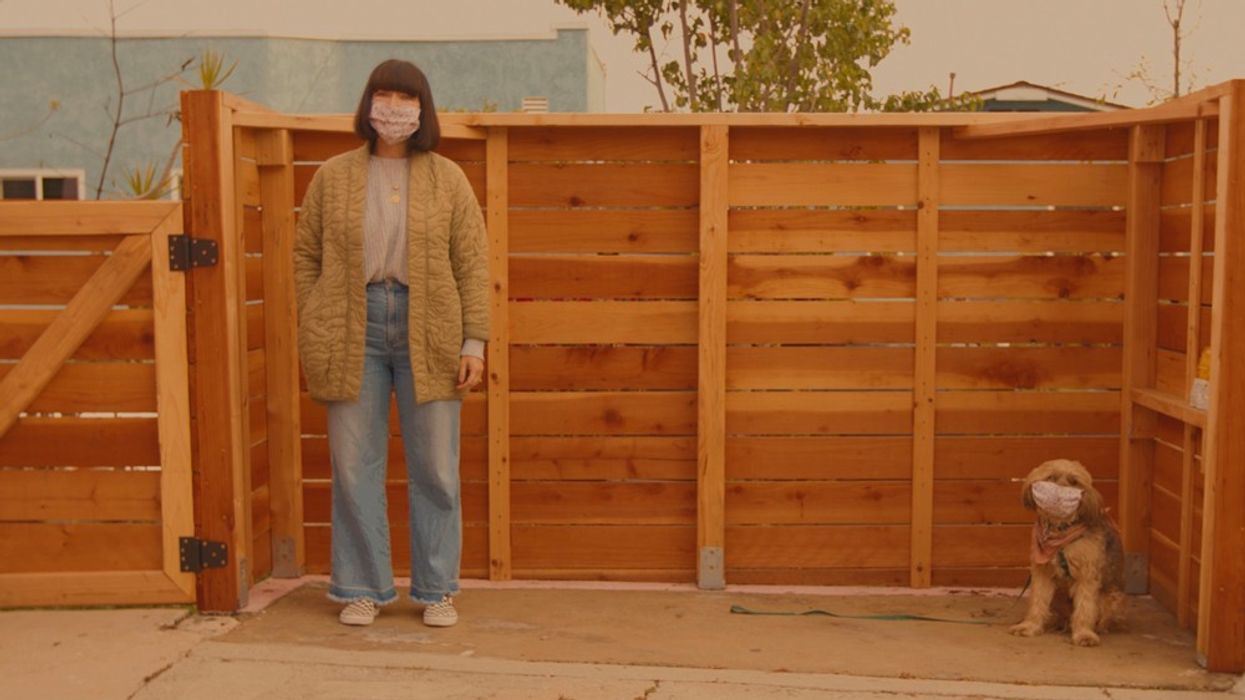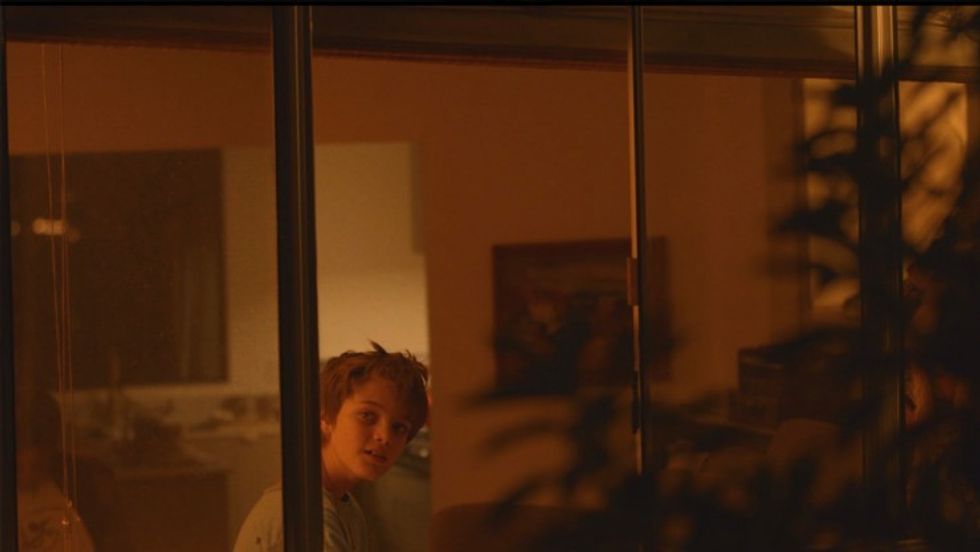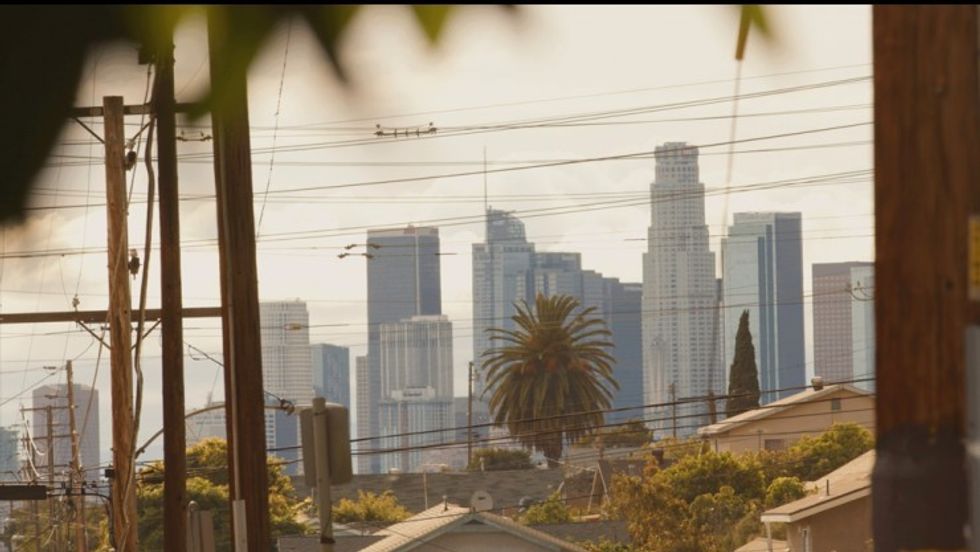Find Out How This Director Shot a Music Video Remotely During Quarantine
Learn tips for shooting while social distancing.

Director Brendan Walter wasn't going to let a pandemic slow down his creativity. The storyteller has directed music videos for the likes of Green Day, Weezer, Panic! At the Disco, and Fall Out Boy, and when musician Jasmine Ash wrote the song, Same Sun, which is inspired by the long days of living in quarantine, the two artists took to the streets of Los Angeles to capture the visual mood of the music.
The multi-day shoot was a challenge in aesthetics, lighting, and composition, where the contrast between the natural ambiance and dark interiors drew the focus of the director. Walter sat down with No Film School to share what he learned during the shoot. Here's what he had to say:
No Film School: How did social distancing affect the creative pipeline? Especially in terms of prep and production.
Brendan Walter: It made it incredibly hard. But definitely a fun challenge. We couldn’t rent anything or hire any crew or interact with our subjects more than 6 feet (mostly more) away. So we had to get creative with the tools we had – a Blackmagic Pocket Cinema Camera, tripod, and some accessories. That was honestly about it. There was no way to set up lighting in someone else’s home, so we had to time things just right and really just get creative.
NFS: Paperwork is always part of production. Talent releases being one of them. How did you end up obtaining all the clearances?
BW: It was all done through apps and digitally. Which honestly is the better way to do it anyway. Thank god for iPhones.
NFS: Hahaha. So true.
BW: Yes. It's so much easier than papers and scanning.
NFS: How did social distancing affect lens choice and focus? In the music video, it seems the creative choice was to have a deep depth of field. Was that intentional or a byproduct of social distancing?
BW: Totally! Well, the entire idea came out of social distancing. We had other plans before this all hit, but we shifted 180° to this new concept and leaned into it. Super telephoto shots or bid wide angles to really show the distance. Initially, I had the idea to do a portrait project, with video portraits of people in their homes as more of an art project based on quarantine, but it just made so much more sense to tie it to the lyrics of the song and be more empowering with it.
NFS: The video was lit with natural or available light. Since you couldn't add lights, did you lean towards a specific color gamut or RAW workflow to get the most out of the image?
BW: Definitely. I had to rely heavily on the Blackmagic RAW to keep the skies from overexposing or darks from losing detail. It’s really tricky to shoot through a window without having flags and balancing light, but the RAW really came in handy. Then I was able to bring a lot of those details back in where people are inside a dark room or porch, but the sky is nice and bright behind them. I used DaVinci Resolve to correct most of it and then applied a LUT that captured the mood over most of the project.
NFS: Since you brought up shooting through windows. Were you able to experiment with lighting at all? Did you ask the talent to turn on any lights for you?
BW: There was lots of experimenting for sure. This whole process of filmmaking in COVID is tough. Being on the phone with people and having them be their own gaffers, grips, directors, AND talent. I directed them from outside. Lots of it was telling them where to go and where to place the lights, etc. But there was almost a fair amount left up to chance. We shot this over about six days so we could shoot at ideal times rather than battling midday sun or super dark nights. So in a way, that was a luxury we were afforded. But not renting gear, we were able to be lean and nimble and shoot well past what a normal budget would allow.
BW: Yes. I edit in Premiere, transcoding the RAW files to ProRes LT so my MacBook doesn’t fry. Once the edit is complete, I'll link the RAW files back in DaVinci Resolve. Sometimes I like to just spit out a 4444 from Premiere and color that, but that’s when I have lighting and things are fairly even from the jump. This one took a bit more work on individual clips to even things out. Once I have a good even color, I graded it with an overall LUT that’s adjusted a little more coarsely. Finally, I took it to After Effects to do any fun masking, cleanup, or in this case, add the text.
NFS: A lot of filmmakers read No Film School. Can you share some things you learned about shooting in the social distancing era?
BW: I think the biggest thing I learned, and am continuing to learn, is to prep ahead of time as much as possible. We did test shots where I filmed myself or filming other people and showing people what it’s going to look like before doing it. When you can’t stand there in person, you have to show them an example, so having an animatic is very useful. It’s a little more work at the start, but it also really makes the directing and the post a little easier.
The second thing is, it’s not impossible. We just have to be smart and safe and even more clever than ever. I was inspired by some other filmmakers doing some interesting things in this time. It’s actually really cool to see what kind of workarounds people are using now. It’s a time to be MORE creative, not less.
And lastly, I think I learned to trust the subject. Let them be themselves. A lot of times the tendency is to tell subjects (especially non-actors) what to do and how to pose. There’s obviously a certain amount of that, but the magic and beauty really came from just letting people do their thing and be themselves.













